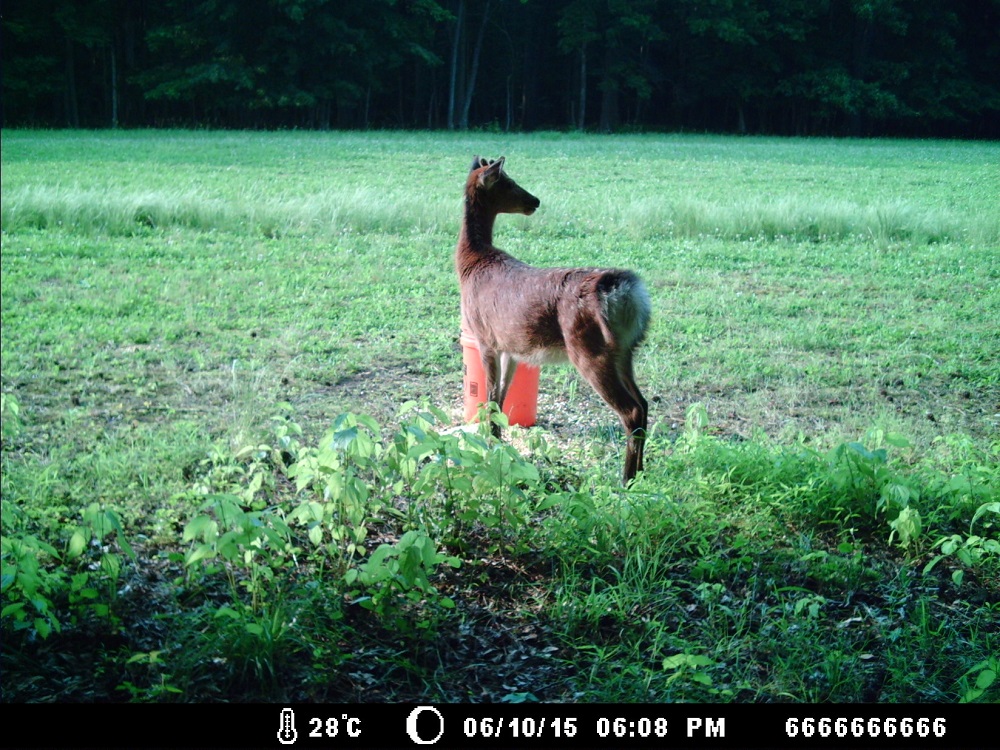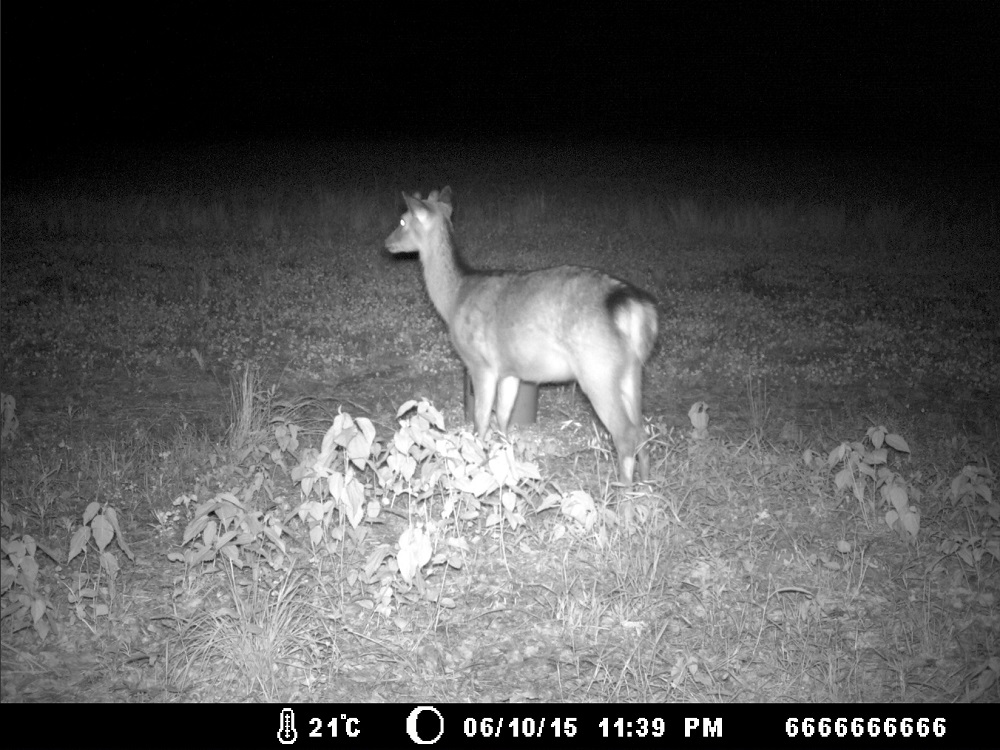by Chris Patrick
Imagine a swimming creature. It holds an antlered head above the water as its skinny, hooved legs tread underneath. A black stripe runs from its head to its tail, outlining a waggling white rump, revealing it to be a sika deer.
In 1916, a man named Clemment Henry released between four and six sika (the number isn’t certain) for hunting on James Island, off Maryland’s Eastern Shore. But it turns out sika are great swimmers—by 1962 they migrated to the Delmarva Peninsula and they now occupy every county of the lower Eastern Shore.
Non-native sika are from Japan. They’re smaller than native white-tailed deer, marked with black, and keep white spots on their sides into adulthood.
Lisa Koetke is an intern in the terrestrial ecology lab, led by senior scientist John Parker, at the Smithsonian Environmental Research Center (SERC). This summer she helped John Devaney, a postdoctoral fellow, determine if sika prefer to eat Maryland’s invasive plants or native plants by setting up bucket buffets.
In clover fields on the Eastern Shore, Koetke and Devaney arranged 25 buckets into a square, each bucket holding branches from a different plant species. About half were native species (including sweetgum and red maple) and half were invasive species from Japan (including Japanese honeysuckle and Japanese wineberry).
They wanted sika to enter the bucket buffets and peruse their meal options, examining the buckets’ branches in turn and eating the plants that appeal most to them—revealing which plants they prefer. Koetke and Devaney also set up motion-activated cameras around their bucket buffets. They checked the recordings to make sure sika were the ones eating plants from the buckets—not the raccoons who occasionally “photobombed” the footage. The footage also showed sika exploring each plant in turn, exactly what Koetke and Devaney wanted the deer to do.
The plots are about two hours from SERC. Koetke and Devaney wanted 24 trials total, or 24 nights of deer recordings. Each week, they set up trials on a Tuesday. The next day, they checked the recordings, measured how much of each plant sika ate, and reset the trials by putting new, non-nibbled branches in the buckets. On Thursday, they got their measurements from the second set of trials, bringing their weekly driving count to 12 hours.
Invasive sika and some invasive plants in Maryland are from the same parts of Asia. They evolved together: As the plants gained defenses to protect them from hungry sika (like bad tastes and smells), sika evolved ways of resisting their defenses.
With these examples of coevolution in mind, Koetke and Devaney were curious to see if sika prefer natives because these plants haven’t evolved defenses against them yet. They measured how much of each plant the sika ate, counting grazed branches and recording the weight loss of each plant, noting whether it was a native or invasive species.
Comparing the amount of native plants eaten to the amount of invasive plants eaten, Koetke and Devaney found that sika ate more native plants than invasive plants over the course of the summer. This suggests sika prefer Maryland’s native species, which could be bad news for Maryland’s native flora.
There is, however, more research to be done. Koetke believes some of this research should include examining the plants sika ate the most of, both native and non-native, to see what traits—physically and chemically—these plants have in common. They also conducted this research in the summer, and sika’s preferences now may not hold during other seasons.
In a clip of black-and-white footage captured at night by a motion-activated camera, a three-legged sika deer hops among plastic gallon buckets stuffed with plant branches. It pauses to sniff, perusing its snack options. It snubs some and nibbles others, seeming to look directly into the camera as it chews. Sika’s preferences could be depleting Maryland’s native flora, but that doesn’t stop them from being adorable.




